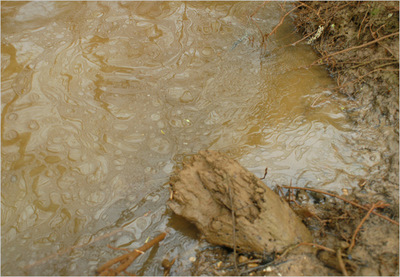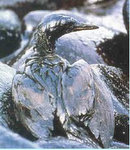News: When Green Goes Commercial: The Waste of Biofuel Production

Biofuel is all about blue skies and clean water, a world with less pollution. An ideal like so many, which turns foul when the commercial world gets hold of it. Once the chase for profit comes primary, even the cleanest biofuel turns out to be a culprit to nature.
When the Black Warrior River in Alabama got covered with an oily, fetid substance, the source of the pollution was traced to the Alabama Biodiesel Corporation plant, the state's biodiesel plant, a refinery turning soybean oil into earth-friendly fuel. The spills, resembling Italian salad dressing, were 450 times higher than permit levels allow and are similar to others that have come from biofuel plants in the Midwest.
According to the National Biodiesel Board, a trade group, biodiesel is nontoxic, biodegradable and suitable for sensitive environments, but scientists say that position understates its potential environmental impact: As with most organic materials, oil and glycerin deplete the oxygen content of water very quickly, and that will suffocate fish and other organisms. And for birds, a vegetable oil spill is just as deadly as a crude oil spill.
Proof of the matter: in the summer of 2006, a Cargill biodiesel plant in Iowa Falls improperly disposed of 135,000 gallons of liquid oil and grease, which ran into a stream killing hundreds of fish.
Iowa leads the US's biofuel production, with 42 ethanol and biodiesel refineries in production and 18 more plants under construction. The US biodiesel plants doubled in numbers over the span of a year: from 90 plants in 2006 to 160 plants in 2007. (Full)
 To put things into perspective:
To put things into perspective:The 1989 Exxon Valdez oil tanker disaster off the coast of Alaska spilled 10.8 million gallons of crude oil. If one biodiesel plant - like the Iowa Falls plant - is able to dispose 135,000 gallons of waste, the current US biofuel plants have a "capacity" to release 21,600,000 gallons, having potentially at least twice the impact of the Exxon Valdez disaster. On a repetitive basis...
The potential impact: The Exxon Valdez spill covered 11,000 square miles (28,000 km²) of ocean, killing an estimate of 250,000-500,000 seabirds. Almost twenty years later, 26,000 gallons of crude oil remain in the sandy soil of the contaminated Alaska shoreline, declining at a rate of less than 4% per year. (Source)
Without proper legislation regulating the pollution caused by the biofuel plants, biofuel will do more harm than good.
More posts on The Road about biofuel, pollution, global warming and the environment.
Thanks to Elizabeth for the link.
Pictures courtesy Nelson Brooke (New York Times) and our-energy.com
 Peter. Flemish, European, aid worker, expeditioner, sailor, traveller, husband, father, friend, nutcase. Not necessarily in that order.
Peter. Flemish, European, aid worker, expeditioner, sailor, traveller, husband, father, friend, nutcase. Not necessarily in that order.
0 comments:
Post a Comment